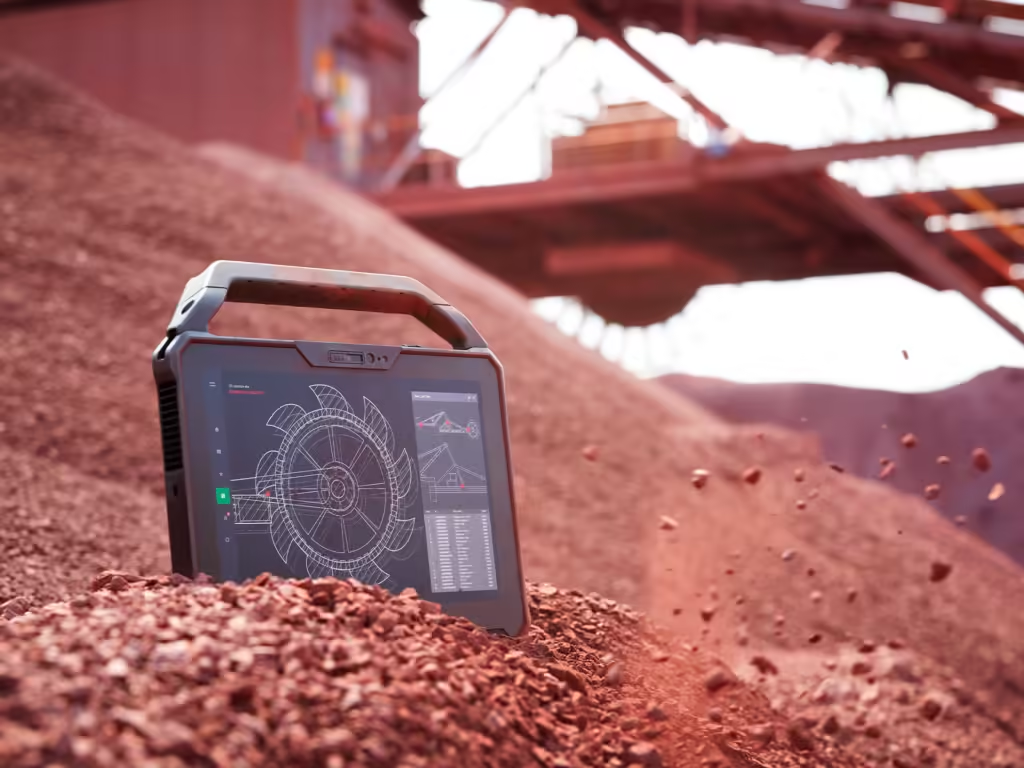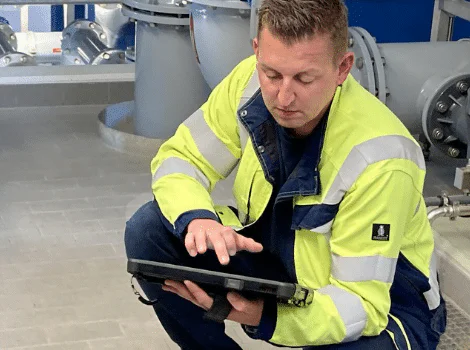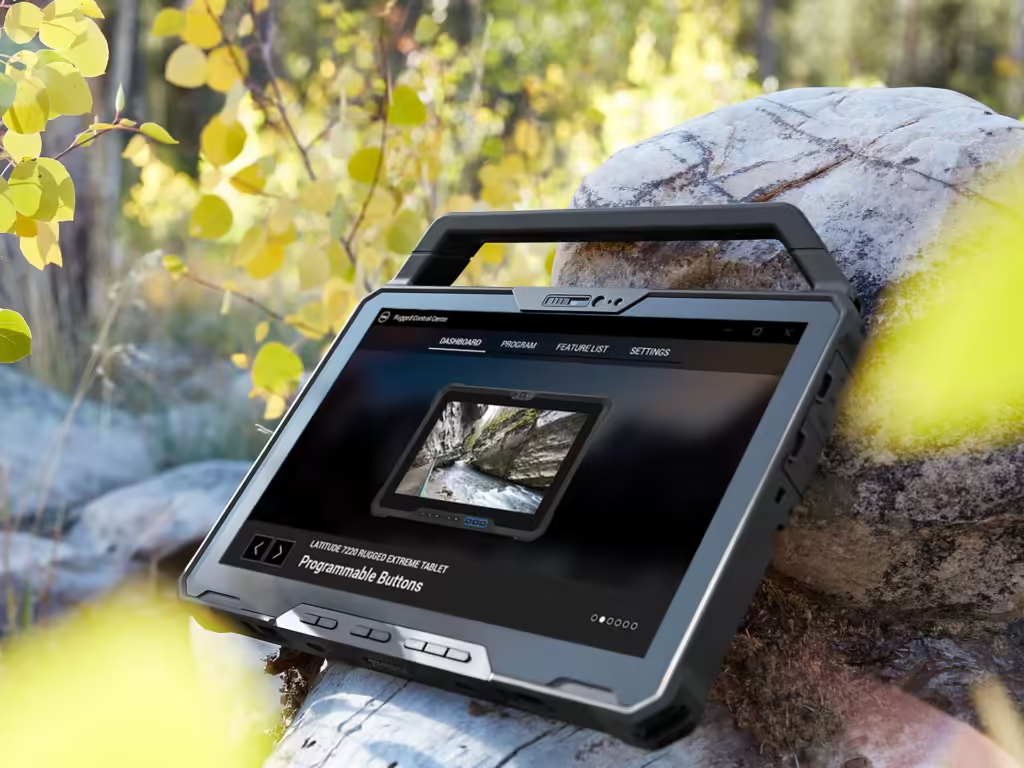Introduction: Why Refurbish EOL Devices?
In today’s rapidly evolving tech landscape, devices often reach their end-of-life (EOL) status within a few years. This poses a dilemma for businesses reliant on technology for their operations. Should they replace these devices with new ones or explore alternative solutions?
Refurbishing EOL devices offers a cost-effective, environmentally friendly solution that breathes new life into aging hardware. This approach is especially relevant for rugged devices, such as Panasonic Toughbooks and Dell Latitude Rugged Tablets, designed to withstand the toughest conditions. In this blog, we’ll explore the benefits of refurbishing EOL devices, the process involved, and how it contributes to a more sustainable future.
Key Takeaways
- Cost-Effective Solution: Refurbishing EOL (End of Life) devices is a smart choice for businesses looking to save money while maintaining reliable hardware performance.
- Environmental Impact: Opting for refurbished devices significantly reduces electronic waste, conserves natural resources, and lowers carbon emissions.
- Performance and Reliability: Refurbished rugged devices undergo rigorous testing and certification to ensure they function just as well as new products.
- Longevity of Rugged Hardware: Devices like Panasonic Toughbooks and Dell Latitude Rugged Tablets are built for durability, making them ideal for refurbishment and extended use.
- Sustainability Alignment: Refurbishing EOL devices supports circular economy principles, showcasing a company’s commitment to environmental responsibility.

Refurbishing EOL devices can yield significant advantages, both for your business and the planet. Here’s why more companies are turning to this approach:
The Advantages of Refurbishing EOL Devices
1. Cost Savings
One of the most compelling reasons to refurbish EOL devices is the cost savings. Refurbished devices typically cost 30-50% less than their brand-new counterparts. For businesses with large fleets of rugged hardware, this can translate to substantial budgetary relief.
2. Extending Product Lifespan
Rugged devices are built to endure extreme environments, making them ideal candidates for refurbishment. A refurbished Panasonic Toughbook FZ-55 or Dell Latitude Rugged Tablet 7220 can serve your business reliably for several additional years.
3. Reducing Electronic Waste
Electronic waste, or e-waste, has become a global environmental crisis. By refurbishing devices, businesses prevent functional hardware from ending up in landfills, reducing their ecological footprint.
4. Enhancing ROI
Refurbishing extends the life of your technology investments, ensuring a better return on investment. Devices restored to optimal functionality provide the same performance benefits at a fraction of the cost.
5. Supporting Sustainability Goals
Choosing refurbished devices aligns with sustainability goals by reducing resource extraction, manufacturing emissions, and waste generation.
Refurbished vs. New: What’s the Difference?
While new devices offer the latest features and technologies, refurbished devices provide unique advantages that make them a compelling choice.
Performance
Refurbished rugged devices undergo comprehensive testing to ensure they perform as reliably as new devices. For instance, refurbished Dell Latitude Rugged Tablets and Panasonic Toughbooks are subjected to rigorous environmental and functional tests to guarantee their durability and performance.
Cost
Refurbished devices cost significantly less than new ones, offering an excellent alternative for businesses looking to optimize their budgets.
Sustainability
The manufacturing of new devices requires significant amounts of raw materials and energy, resulting in a larger carbon footprint. Refurbishing devices eliminates the need for these resource-intensive processes, making it a greener choice.
Warranty and Support
Reputable refurbishers provide warranties on their devices, offering peace of mind and ensuring post-purchase support.
How Refurbishing EOL Devices Supports a Sustainable Future
Refurbishing devices doesn’t just benefit businesses; it also has a profound impact on the environment.
1. Reducing Resource Consumption
Refurbishing eliminates the need for extracting raw materials like rare earth metals used in manufacturing electronic devices. This helps conserve finite natural resources and reduces the environmental damage associated with mining.
2. Lowering Carbon Footprint
Manufacturing new devices generates significant CO₂ emissions. By refurbishing, businesses can reduce the carbon emissions associated with their hardware needs, supporting global efforts to combat climate change.
3. Minimizing E-Waste
Refurbishing helps divert functional hardware from landfills, significantly reducing the amount of electronic waste. This is crucial, as e-waste contains hazardous materials that can leach into the soil and water, causing long-term environmental damage.
4. Promoting Responsible Consumption
Investing in refurbished devices aligns with the principles of the circular economy, encouraging the reuse and recycling of resources. This shift in consumption patterns is essential for achieving long-term sustainability.

The Refurbishment Process: From EOL to Like-New
Refurbishing EOL devices involves a series of meticulous steps to restore them to their original functionality. Here’s how it works:
Step 1: Assessment
Each device is carefully inspected to determine its condition. This includes checking for hardware and software issues, as well as evaluating the overall usability of the device.
Step 2: Component Replacement
Damaged or outdated components are replaced with new or certified pre-owned parts. For rugged devices, this might include replacing batteries, upgrading processors, or repairing display screens.
Step 3: Software Updates
The latest software and firmware updates are installed to ensure the device is compatible with modern applications and meets current security standards.
Step 4: Testing
The refurbished device undergoes rigorous testing to verify its performance, durability, and reliability. For rugged hardware, this includes environmental testing to ensure it can withstand extreme conditions.
Step 5: Certification and Warranty
Once the refurbishment process is complete, the device is certified and often comes with a warranty to provide buyers with confidence in their purchase.
Environmental Benefits of Choosing Refurbished Rugged Devices
Opting for refurbished rugged devices offers measurable environmental benefits:
1. Reduced Waste
Refurbishment keeps functional devices out of landfills, reducing the volume of e-waste generated each year.
2. Energy Savings
Manufacturing new devices consumes significant energy, from mining raw materials to assembling components. Refurbishment uses far less energy, reducing the overall environmental impact.
3. Conservation of Resources
Refurbishing extends the life cycle of existing devices, decreasing the demand for new raw materials and reducing resource extraction.
4. Advocacy for Sustainability
By choosing refurbished hardware, businesses demonstrate their commitment to environmental sustainability, setting an example for responsible consumption.
Success Stories: Businesses Benefiting from Refurbished Devices
Case Study 1: Logistics Company
A global logistics company opted for refurbished Panasonic Toughbooks for its delivery fleet. This decision not only reduced hardware costs by 40% but also supported the company’s sustainability goals by lowering its e-waste generation.

Case Study 2: Retail Chain
A major retail chain implemented refurbished Dell Latitude Rugged Tablets for in-store inventory management. The devices performed seamlessly, and the initiative helped the company save 35% on IT expenses while aligning with its green objectives.

Conclusion: A Smart, Sustainable Choice
Refurbishing EOL devices is a cost-effective, eco-friendly solution for businesses looking to optimize their technology investments. Rugged devices like Dell Latitude and Panasonic Toughbooks are perfect candidates for refurbishment, offering reliable performance and extended usability.
By choosing refurbished hardware, businesses can reduce costs, support sustainability goals, and contribute to a circular economy. If you’re considering upgrading your technology while minimizing your environmental impact, refurbished rugged devices are an excellent option.
FAQs
What does EOL mean for devices?
EOL, or End of Life, refers to the stage when a device is no longer supported by its manufacturer. However, many EOL devices can be refurbished and restored to functionality.
How does refurbishment differ from buying new?
Refurbished devices are pre-owned but undergo rigorous testing and repair to function like new. They are more cost-effective and environmentally friendly compared to purchasing new devices.
Are refurbished rugged devices reliable?
Yes. Reputable refurbishers ensure refurbished devices meet high-quality standards and often include warranties to guarantee reliability.
What are the environmental benefits of refurbishment?
Refurbishing devices reduces e-waste, conserves natural resources, and lowers carbon emissions associated with manufacturing new devices.
Which rugged devices are available refurbished?
MicroNordic offers a wide range of refurbished rugged devices, including Dell Latitude Rugged Tablets and Panasonic Toughbooks.

